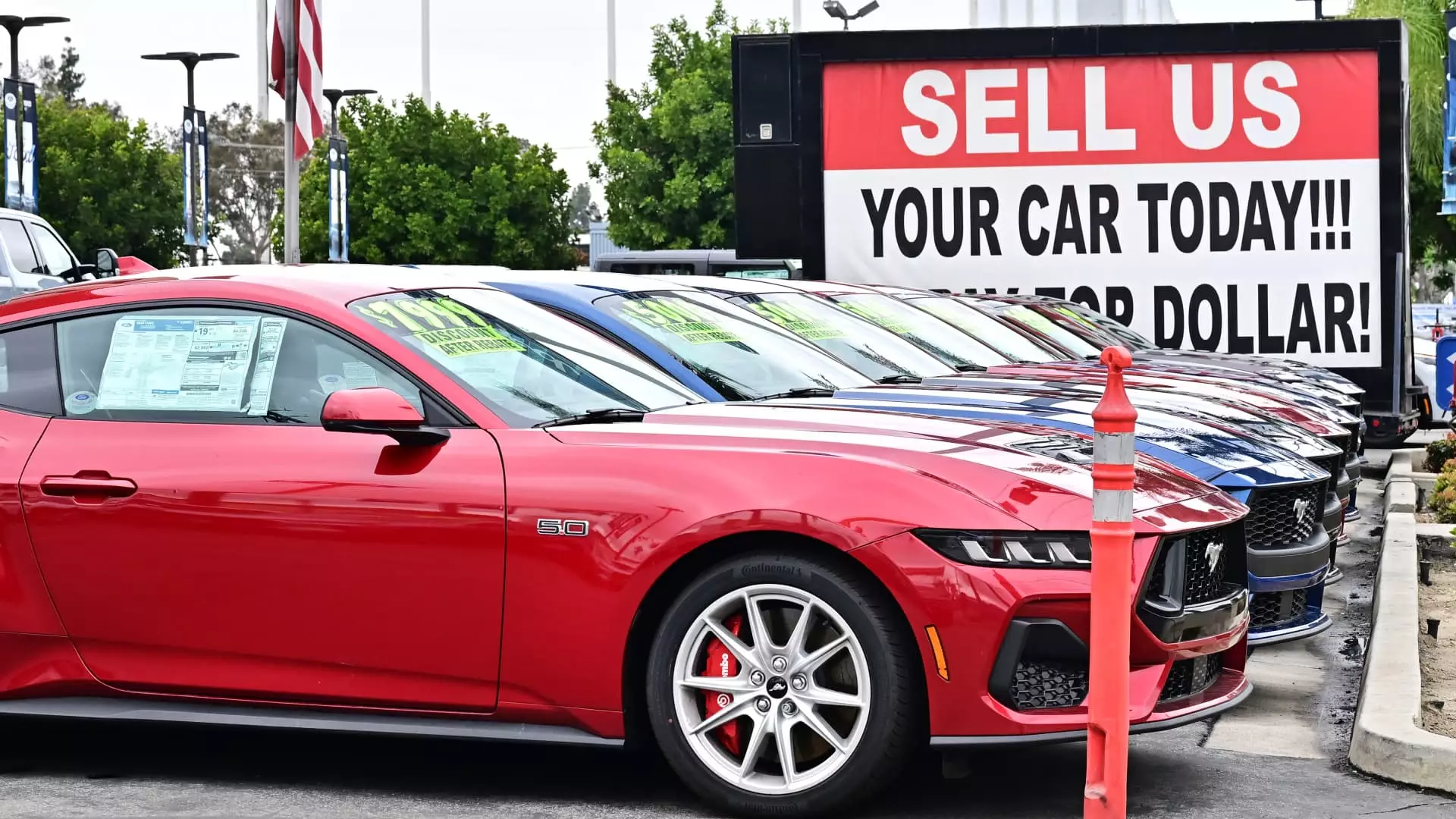In a startling turn of events, used vehicle prices have begun to decline after reaching a peak in April, sending ripples of concern through the automotive market. According to the Cox Automotive’s Manheim Used Vehicle Value Index, prices fell 1.5% from April to May, a change that, while seemingly small, represents a significant moment for consumers and industry insiders alike. This change, however, should not be viewed in isolation; it’s a reflection of shifting consumer sentiments and an evolving marketplace.
The Whispers of Tariffs and Trade
Despite the fact that President Trump’s tariffs on new imported vehicles don’t directly affect the used vehicle market, their shadows loom large. Potential buyers, preemptive in their decision-making, rushed to purchase vehicles before the anticipated price hikes, motivated by anxiety over tariffs. This dynamic creates an unstable environment where fear drives purchasing behavior, making the vehicle market more volatile than ever. When consumers opt to purchase in haste out of concern for future costs, it distorts the natural rhythm of supply and demand.
Understanding Supply Constraints
Equally important to consider is the impact of inventory levels. There are only about 2.2 million used vehicles available—a stark contrast to historically higher levels. This scarcity can artificially inflate prices, particularly in periods of strong demand. The automotive industry is not only grappling with pandemic repercussions but also contending with a long-term trend of consumers holding onto their vehicles for longer than before. When combined with reduced production levels, this creates an ecosystem where the used vehicle market is susceptible to sudden fluctuations.
The Discrepancy in Retail Prices
Another layer of complexity arises when we look at retail used vehicle sales, which dipped 3% in May compared to April but increased by 4% year-over-year. This discrepancy sheds light on a troubling trend: retail prices for consumers have not kept pace with wholesale price changes. Such a lag poses a significant risk to both buyers and sellers. Consumers may find themselves overpaying for used vehicles, while sellers may struggle to adjust their pricing in tandem with the wholesale market—a recipe for market dysfunction.
Stabilization or Volatility Ahead?
It’s noteworthy that after years of wild swings, the used vehicle prices appeared to be stabilizing in 2024. However, mere stabilization isn’t enough. In a dynamic economic environment characterized by uncertainty and shifting consumer behavior, it’s crucial for consumers to remain vigilant. Sellers must also adapt quickly to changes in demand and economic conditions, lest they end up caught off guard in a rapidly evolving landscape.
The used vehicle market serves as a mirror to broader economic trends, revealing much about consumer confidence and industry responsiveness. Ultimately, understanding the larger interconnections at play within this market is essential for anyone looking to make informed decisions—whether as a buyer or a seller. As we move forward, the challenge will be to navigate these turbulent waters with insight and adaptability.

Leave a Reply